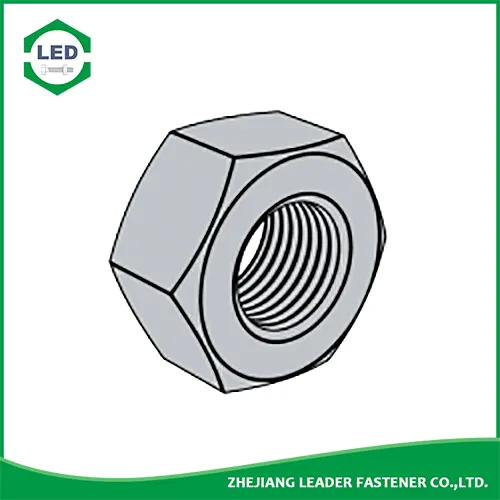The basic knowledge of Hex Nut
2025-05-28
1. Definition
A hex nut is a six-sided (hexagonal) fastener with an internal threaded hole. It pairs with a bolt or threaded rod to clamp parts together.
2. Geometry & Dimensions
Hexagonal Shape: Six flat faces allow a wrench to grip from multiple angles.
Width Across Flats (WAF): Distance between two opposite flat sides; standard sizes correspond to bolt diameters.
Thickness: Typically close to the bolt’s nominal diameter (e.g., a 1/4″ nut is ~1/4″ thick).
3. Thread Types
Coarse Thread (UNC/Metric Coarse): Fewer threads per inch/mm; faster assembly, more tolerant of damage.
Fine Thread (UNF/Metric Fine): More threads per inch/mm; higher tensile strength, better for precise adjustments.
4. Materials & Finishes
Carbon Steel: Common, economical; often zinc-plated for corrosion resistance.
Stainless Steel (e.g., A2, A4): Excellent corrosion resistance; used outdoors or in corrosive environments.
Brass, Nylon, Alloy: Specialty applications (e.g., electrical conductivity, vibration resistance).
5. Strength Grades & Standards
Imperial Grades: Grade 2 (low), Grade 5 (medium), Grade 8 (high strength).
Metric Classes: 4.6, 8.8, 10.9, 12.9. Higher numbers = higher tensile strength.
Standards:
ISO 4032 / DIN 934 (metric hex nuts)
ASME B18.2.2 (inch hex nuts)
A563 (heavy hex nuts for structural bolts)

6. Variants
Standard (Hex): Most common.
Heavy Hex: Thicker and wider across flats; used with structural bolts.
Jam Nut: Thinner; used as a locknut.
Lock Nut: With nylon insert (nyloc), distorted threads, or metal insert to resist loosening.
7. Installation & Torque
Apply lubrication or use dry nuts depending on requirement.
Torque to manufacturer’s specification to ensure proper clamp load without over-stressing threads.
8. Applications
Machinery assembly
Structural connections
Automotive and aerospace
General-purpose fastening in construction and repair
If you are interested in our products or have any questions, please feel free to contact us and we will reply you within 24 hours.


